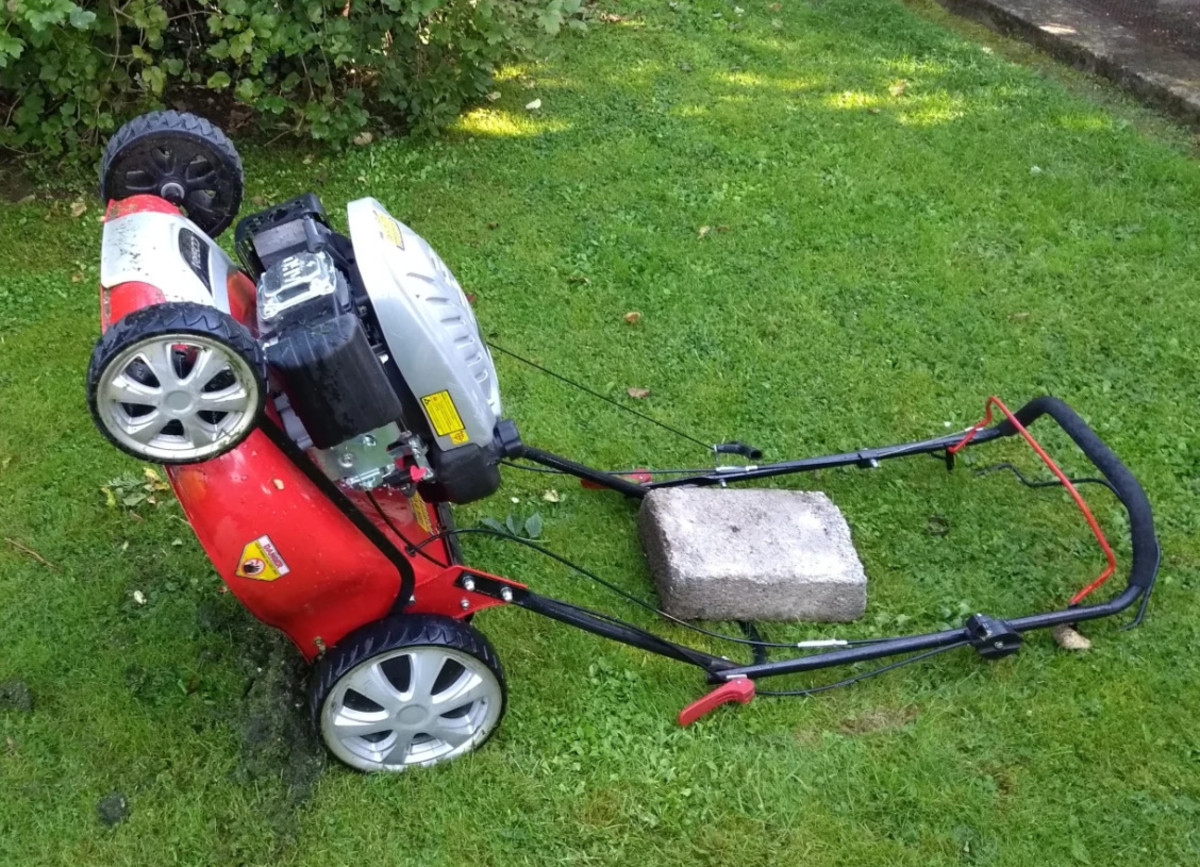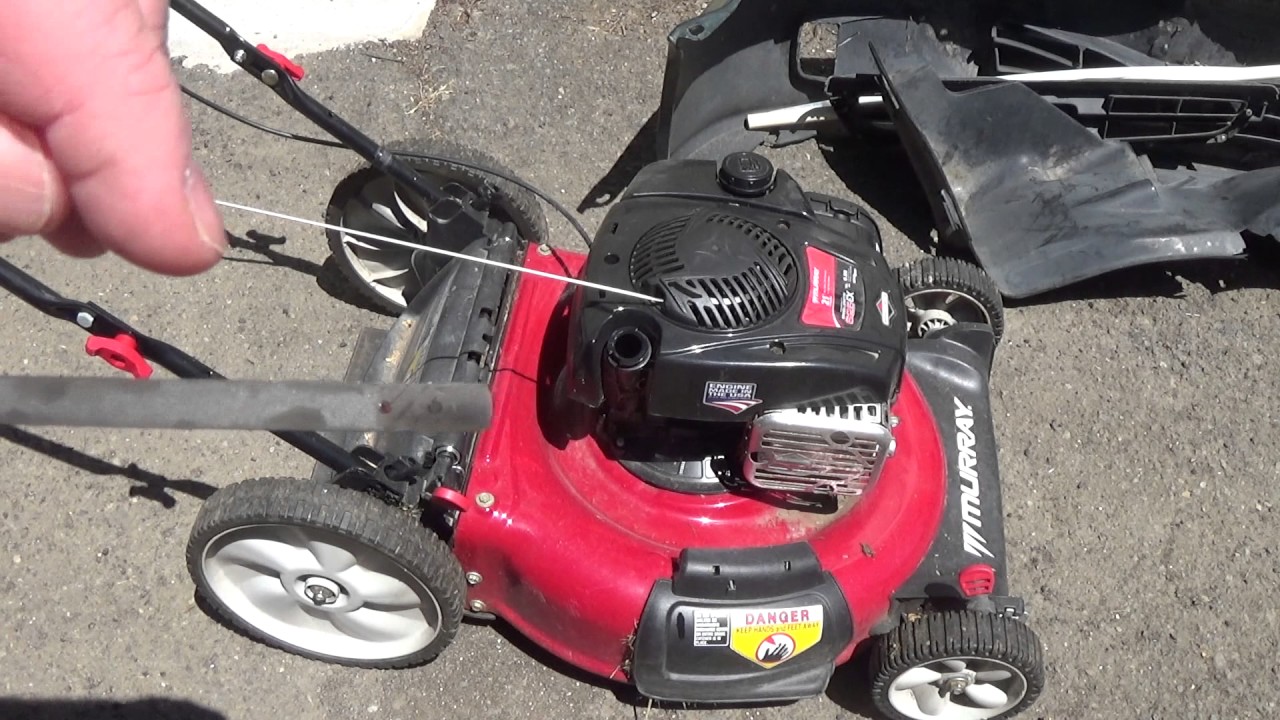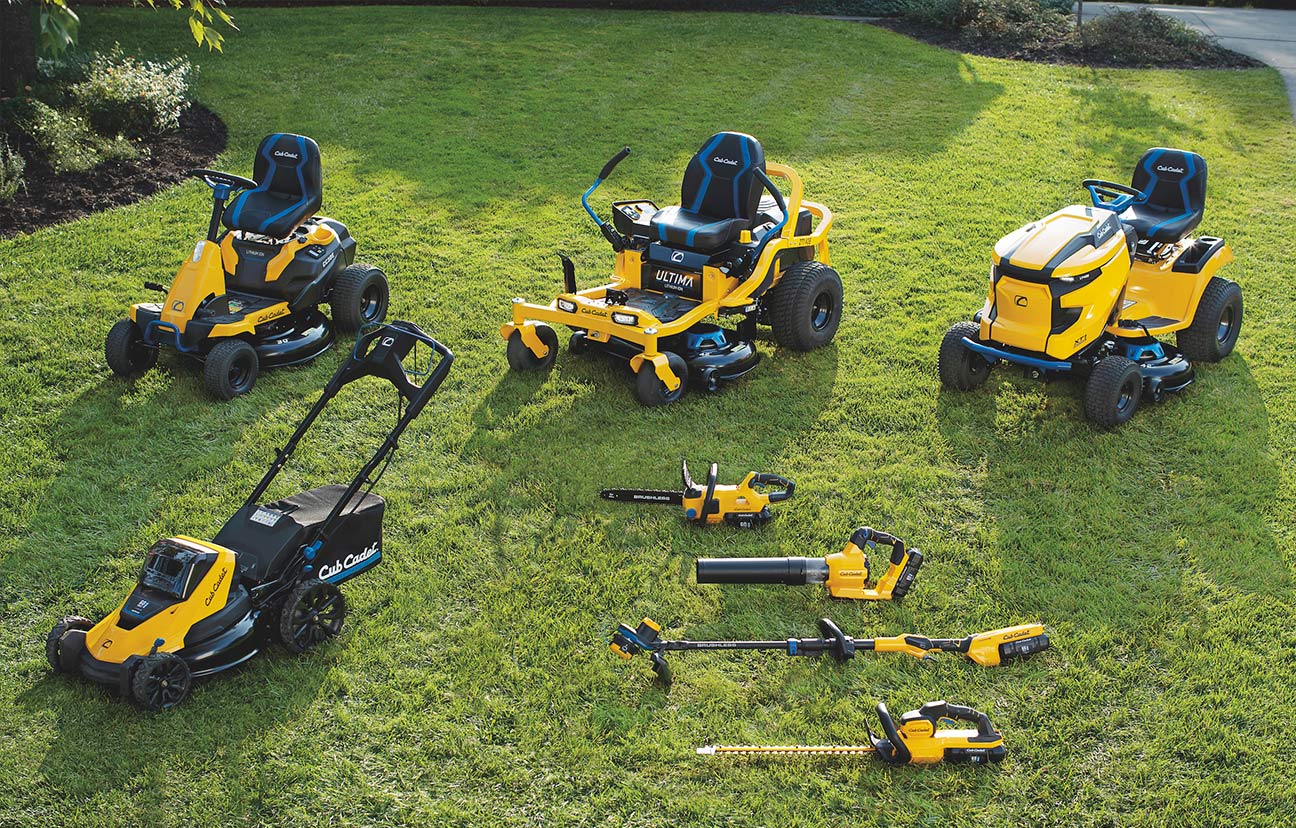Lawn maintenance starts with a well-maintained lawnmower, which means there are certain tasks that need to be done constantly to keep the machine in top working order. One of the most important aspects of owning a lawn mower is knowing how to check and change the oil.
Checking the oil level
The best way to avoid problems with your lawn mower is to check the oil level before each engine start. So you will know in a timely manner that the oil is not enough or it has darkened and it is time to change it.
Procedure
- Wipe the area around the oil cap to keep dirt out of the crankcase. The oil cap is marked with the engine oil symbol, or the words Oil (oil), Add (top up).
- Unscrew the cap and remove the dipstick. Wipe it with a clean cloth and screw it back on as tightly as possible. This procedure ensures an accurate reading of the results.
- Pull out the dipstick a second time. The oil mark must be between the measuring lines – FULL and ADD (full and top up). There are also labels Max and Min.
If the oil level is above the FULL mark, it should be pumped out with an oil syringe. If the level is below ADD, fresh oil must be added.
Preparation and setup
The location of your lawnmower is important when preparing this machine for an oil change. Because of the potential for leakage, it is best not to do this work on grass or near flower beds, as oil droplets can adversely affect plant life. Choose a hard, flat surface such as a driveway or pavement, and be sure to use plastic sheeting to keep oil drips and stains on this protective sheet.
Warm oil is much easier to change. Of course, you can change the oil in a cold engine, only the lubricant will be more viscous only at high temperatures.
It is a good rule of thumb to run the mower for one or two minutes before changing the lubricant to warm up the engine a bit. After that, you will have much less problems extracting the old grease. It is also useful to take precautions when operating the mower after turning it on, as the likelihood of burns on the engine will increase, for example. The use of work gloves is recommended to reduce the risk of injury.
And finally, you can disconnect the spark plug wire from the spark plug itself and put it away to avoid accidentally starting the engine. You also need to make sure that the pump (pump) is turned off. The last step in your preparation should also include cleaning the area around the oil fill hole to prevent foreign particles or dirt from entering the oil reservoir.
Tools and materials
You may need a set of tools:
- Oil collecting container;
- Clean, dry rags, napkins or towels;
- Socket wrench with the corresponding socket;
- Empty plastic containers (household with lids);
- Engine oil;
- Set of wrenches;
- Trumpet;
- Pumping syringe;
- Siphon.
Removing old oil
Removing old grease is one of the most important steps in the process. There are three ways to make sure you remove a large amount of old oil.
Use a siphon. Insert one end of the tube into the dipstick hole to measure the oil level until it reaches the bottom of the oil reservoir. Place the other end of the siphon in a structurally sound container that you will specifically use for this and future grease changes. Finally, place wood blocks or other strong material under the mower wheels on the opposite side of the fill hole. In a lawn mower at an angle, it is easier to remove almost all the oil.
Remove the oil plug. Depending on the type of petrol mower, you can remove the oil plug to drain the old grease. Consult your owner’s manual for the location of your drain plug and make sure you have the correct size socket wrench for the job. With a wrench on the plug, remove it. When the oil is completely drained, you can replace the plug.
Use a special tool such as a syringe to drain and fill the oil tank. This is very convenient when the tank opening is too narrow, and at the same time it is inconvenient or impossible to fill in new oil from the bottle. The syringe can easily pass through the hole to pump out the old used oil.
Tilt method. If you do not have access to the oil tank, you can drain it by tilting the mower on its side. When tilting the mower, place the filler cap on the container you are using to collect the used oil. Once properly positioned, remove the filler cap and allow the oil to drain completely. Using this method, you must know exactly what level of fuel is in the lawnmower. Here it is also important to note where the air filter is located so as not to contaminate it with drain oil.
Tank filling
Now that the old oil has been removed, it’s time to fill the reservoir with fresh grease. Again, refer to your lawn mower’s owner’s manual to find out which type of oil is suitable for your machine, as well as how much oil to fill.
Be aware that overfilling and underfilling the oil reservoir can harm the operation of the mower.
Fill up the oil tank. Let the oil sit for at least two minutes and then check the level with a dipstick to make sure it is filled properly.
Once the oil reservoir is filled to the proper level, you will need to reattach the spark plug wire. Do not start the mower right away, let the machine stand for a few minutes before starting work.
FAQs
To begin with, we will analyze how important it is to periodically change the oil in a lawn mower. Firstly, this liquid provides air cooling of the mechanism, thereby allowing the engine to operate at extremely high speeds. Secondly, lawn mower oil protects mower parts during winter storage.
If the motor is not new, the lawnmower oil can be changed approximately every 25-50 hours of operation of the tool. This is an average of 2-3 months of work. Also, the condition of the oil can be determined without measuring the number of hours worked. Just make sure it doesn’t start to turn black. When this happens, be sure to change the fluid, otherwise the engine may simply jam soon.
First, the old fluid is drained.
Next, the lawnmower turns on its side (to the side where the drain hole is located) for several minutes until the waste liquid drains completely. Next, the tool is placed back in a horizontal position. In this case, it is necessary to prepare in advance a small container for old oil.
After that, a new one is poured through the neck into the lawn mower.
Everything, at this stage, the oil change can be considered complete. When you pour new liquid into the neck, remember that it must be poured strictly to the indicated mark in the crankcase.
It is necessary to emphasize that a certain type of liquid and its viscosity directly depends on the temperature conditions in which this tool is operated. So, if the weather is warm (temperature from plus 5 to plus 30 degrees Celsius), it is recommended to use SAE-30 series fluid. During the off-season, experts recommend pouring lawnmower oil with a viscosity of 10W-30. In winter, 5W-30 series fluid can be used. It is also worth paying attention to Synthetic 5W-30, which, by its properties, ensures reliable operation of lawn mower parts at relatively low temperatures.












